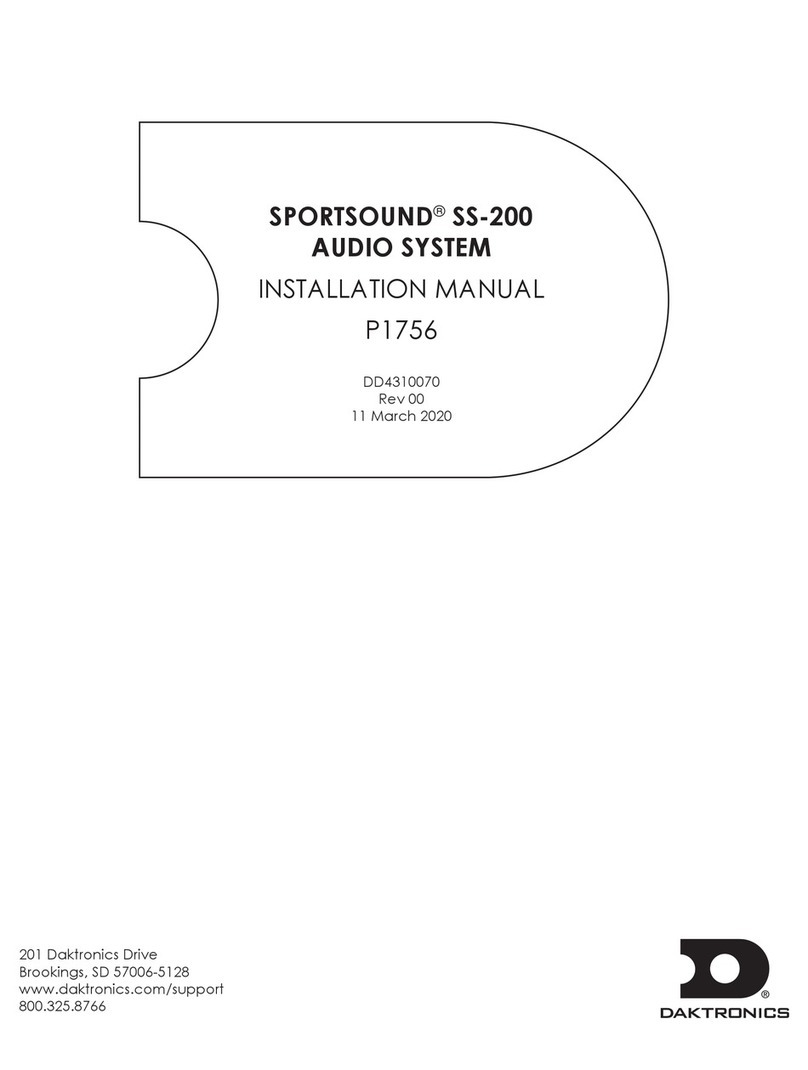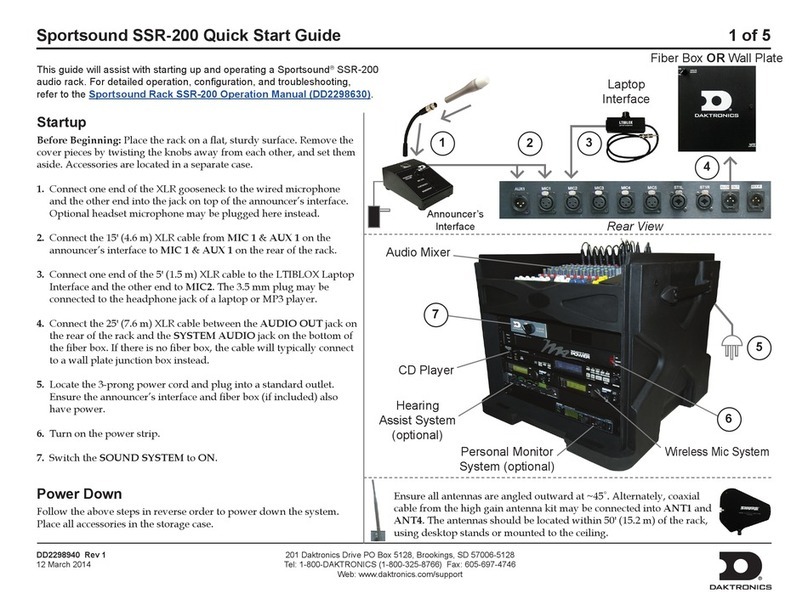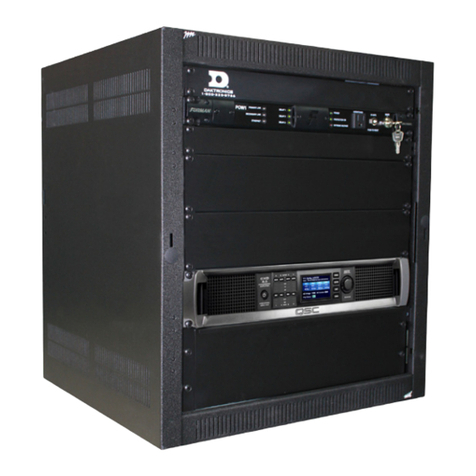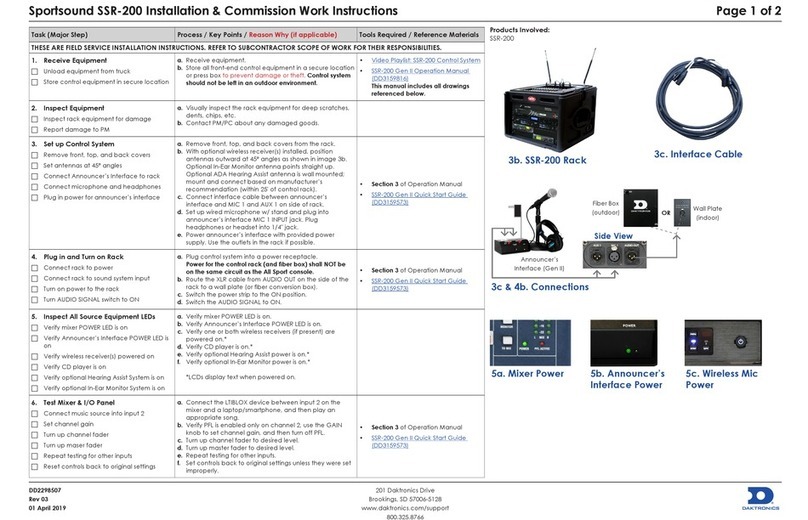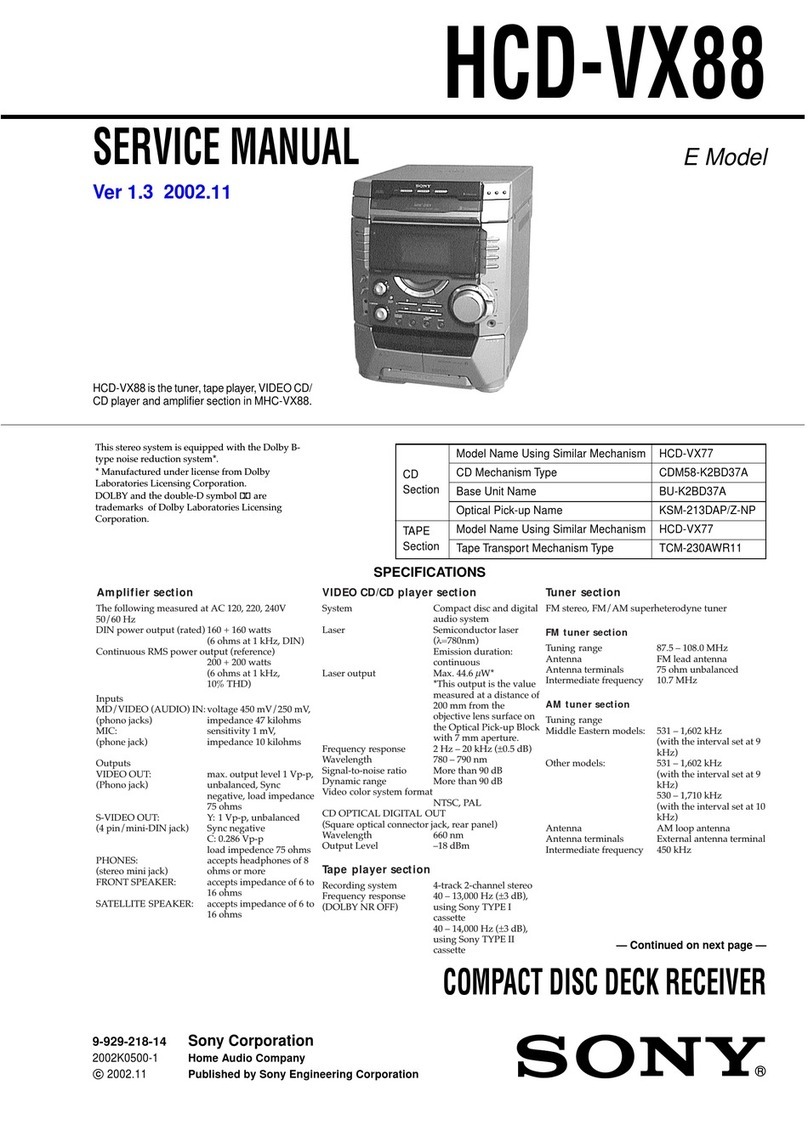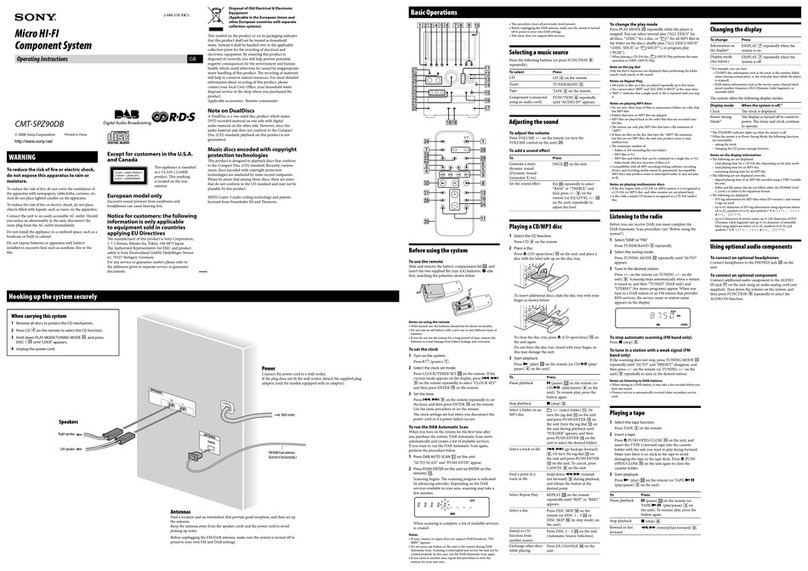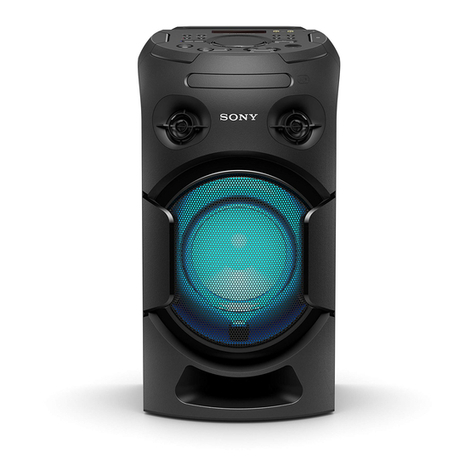
– i –
Table of Contents
1 Introduction���������������������������������������������������������������������������������������������������������������������������1
Important Safeguards ..........................................................................................................................1
Resources ..............................................................................................................................................1
Daktronics Nomenclature ...................................................................................................................2
2 Sound System Components ������������������������������������������������������������������������������������������������3
Equipment Overview ...........................................................................................................................3
Sound Cabinet......................................................................................................................................3
Grille���������������������������������������������������������������������������������������������������������������������������������������������������3
Drivers ������������������������������������������������������������������������������������������������������������������������������������������������3
Control Enclosure..................................................................................................................................4
Fiber Conversion Box............................................................................................................................4
Audio Control Rack..............................................................................................................................4
Signal Cables ........................................................................................................................................4
3 Mechanical Installation �������������������������������������������������������������������������������������������������������5
Cabinet Installation ..............................................................................................................................5
Lift the Cabinet����������������������������������������������������������������������������������������������������������������������������������5
Mount the Cabinet ���������������������������������������������������������������������������������������������������������������������������6
Aim the Speakers �����������������������������������������������������������������������������������������������������������������������������6
Mounting the Control Enclosure .........................................................................................................7
4 Electrical Installation ������������������������������������������������������������������������������������������������������������8
Power/Signal Connections..................................................................................................................8
Power IN ��������������������������������������������������������������������������������������������������������������������������������������������9
Signal IN ��������������������������������������������������������������������������������������������������������������������������������������������9
Speaker OUT �������������������������������������������������������������������������������������������������������������������������������������9
Grounding ���������������������������������������������������������������������������������������������������������������������������������������10
Lightning Protection ...........................................................................................................................10
Fiber Conversion Box Connections...................................................................................................10
5 Maintenance�����������������������������������������������������������������������������������������������������������������������12
Grille Maintenance and Cleaning ...................................................................................................12
Grille Mesh Replacement..................................................................................................................12
Control Enclosure Maintenance.......................................................................................................15
Filters ������������������������������������������������������������������������������������������������������������������������������������������������15
Fan ���������������������������������������������������������������������������������������������������������������������������������������������������15
Thermostat���������������������������������������������������������������������������������������������������������������������������������������15
6 Troubleshooting ������������������������������������������������������������������������������������������������������������������16
Indicator Lights....................................................................................................................................17
Control Enclosure ���������������������������������������������������������������������������������������������������������������������������17
Audio Control Rack������������������������������������������������������������������������������������������������������������������������17
Fiber Conversion Box ���������������������������������������������������������������������������������������������������������������������17
Driver Troubleshooting .......................................................................................................................18
Driver Replacement ...........................................................................................................................18
High-Frequency Driver (A-2302) ���������������������������������������������������������������������������������������������������18
